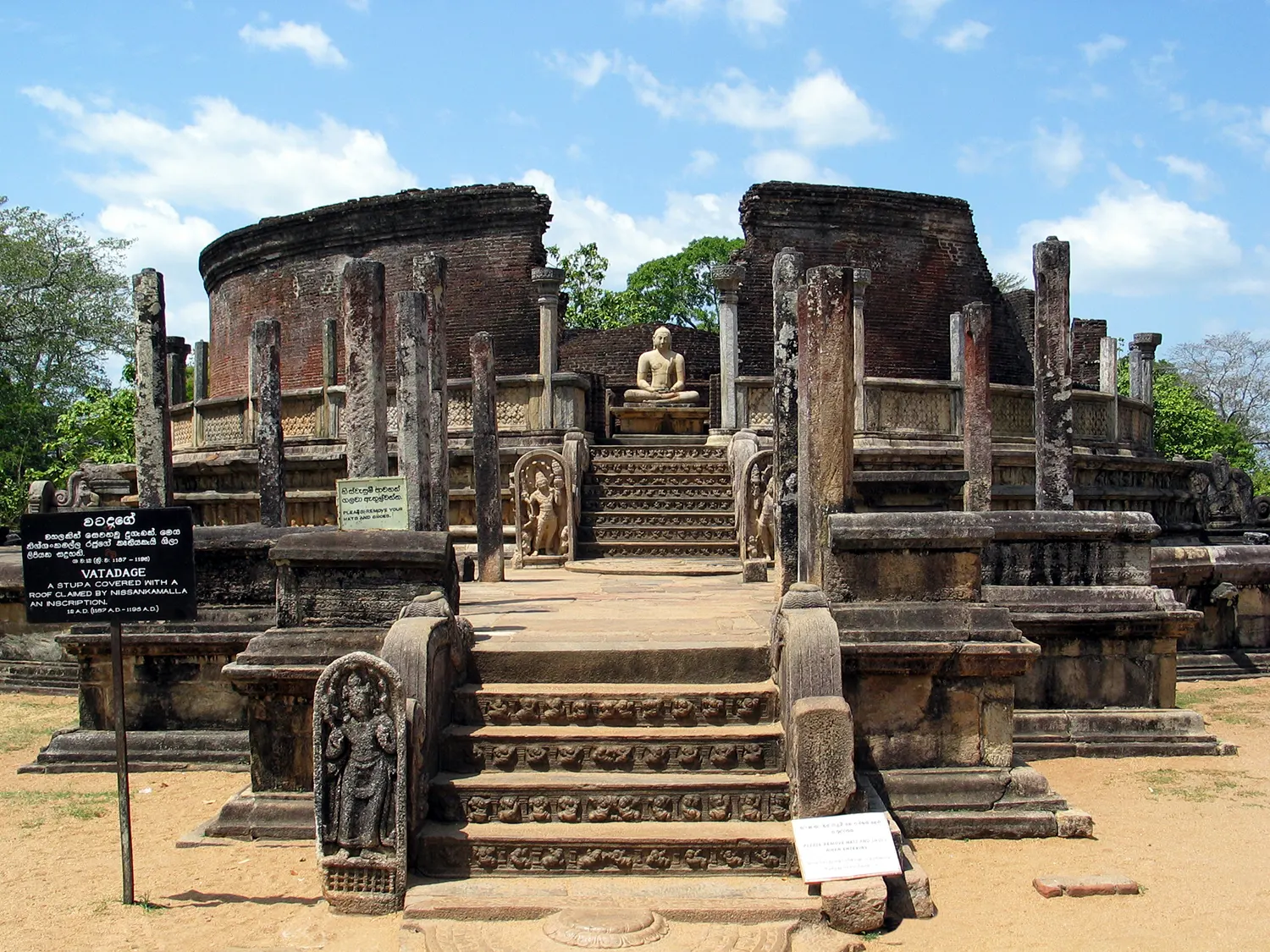Polonnaruwa, another UNESCO World Heritage Site, is one of Sri Lanka's ancient capitals, renowned for its well-preserved ruins, magnificent Buddhist temples, and elaborate royal palaces. The city is an archaeological treasure trove that reflects the grandeur of Sri Lanka’s ancient civilizations. Visitors to Polonnaruwa can explore the city’s historical significance, marvel at its stunning stone sculptures, and enjoy the lush surroundings and ancient reservoirs that dot the landscape.
Highlights
- Gal Vihara: A set of colossal Buddha statues carved out of solid granite rock, considered one of the finest examples of ancient Sri Lankan sculpture.
- Parakrama Samudra: An expansive reservoir built by King Parakramabahu, showcasing ancient engineering skills and providing beautiful sunset views.
- Royal Palace: The remains of King Parakramabahu’s grand palace, which once stood seven stories high.
- Quadrangle: A collection of ancient temples, stupas, and shrines that form the sacred heart of Polonnaruwa.
- Rankoth Vehera: A massive stupa built by King Nissanka Malla, one of the largest stupas in Sri Lanka.
Weather
- Best time to visit: May to September (dry season).
- Average temperature: 25–35°C (hot and dry).
Transport
- Polonnaruwa is about 5–6 hours from Colombo by road or train.
- Bicycles are popular for exploring the ancient city, while tuk-tuks and taxis are available for local transport.
- Gal Vihara: Admire the intricate rock carvings of the seated, standing, and reclining Buddha statues, which are some of the most iconic in Sri Lanka.
- Parakrama Samudra: Visit the vast artificial lake and surrounding parklands for a peaceful walk or boat ride.
- Vatadage: An impressive circular relic house in the Quadrangle that once protected a sacred tooth relic of the Buddha.
- Shiva Devale No. 2: One of the oldest Hindu temples in Polonnaruwa, reflecting the multicultural heritage of the city.
- Lankathilaka Temple: A towering image house with a huge standing Buddha statue and impressive brickwork.
- Local delicacies: Rice and curry, with regional specialties including freshwater fish dishes from the nearby reservoirs.
- Must-try: Polonnaruwa’s versions of Sri Lankan kottu roti, spicy curries, and coconut sambol.
- Popular drinks: Fresh king coconut water, herbal drinks, and fruit juices made from local produce.
Polonnaruwa served as the second capital of ancient Sri Lanka after the fall of Anuradhapura in the 11th century. Under the reign of King Parakramabahu I, the city flourished as a center of trade, agriculture, and religion. The grand reservoirs, temples, and monuments that remain today reflect the city’s former prosperity and the achievements of its ancient kings. Polonnaruwa’s ruins provide insight into the island’s rich cultural heritage and architectural brilliance, making it a must-visit for history enthusiasts.











